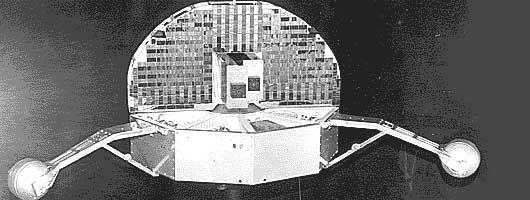OSO-1
Orbiting Solar Observatory-1

Results
Most of the counting rates in orbit were due to cosmic-ray produced gamma-rays, as determined from the observation of a large latitude effect. A series of balloon flights with an identical instrument has allowed an extrapolation of atmospheric gamma-rays to the satellite altitude and a determination of the effects of local condensed materials. About 20% of the 1 MeV flux of 0.8 counts/cm2-s-MeV at 8 grams/cm2 over Yuma, Arizona is due to production in the 14 kg of instrument mass. At 550 km the flux at 1 MeV due to the total spacecraft matter is determined to be about 0.5 counts/cm2-s-MeV, with a differential power law index of 1.55 over the 0.3-3.0 MeV range. This spectrum and flux is in reasonable agreement with the production determined on the Ranger III spacecraft in cislunar space, after correction for the diffuse cosmic flux, which contributes about 0.18 counts/cm2-s-MeV at 1 MeV.
About 95% of the flux measured by the 50-150 keV telescope was due to production in the Pb collimator, apparently not all due to cosmic-ray effects. Most of the Compton telescope coincidence events are determined to be a background phenomenon. About 0.03 counts/cm2-s in the 1.5-4.5 MeV range can be attributed to cosmic gamma-rays. The rest are due to earth albedo and production in the spacecraft.
OSO-1 Information
Mission Objectives
Spacecraft
Gamma-ray Experiment
Results
Publications